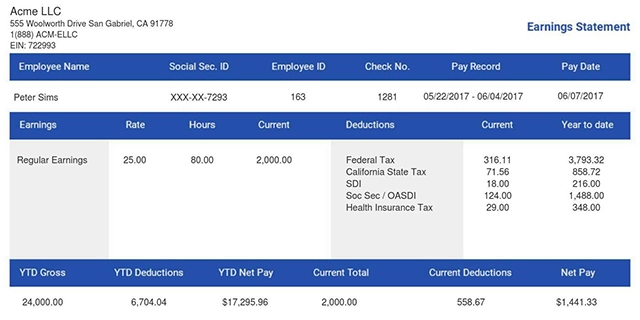What Is Adjusted Gross Income And How Do You Calculate AGI From A W-2?
If you're new to the tax world, navigating the terms and jargon might feel like a minefield. But educating yourself will pay off when you have a strong grasp on your finances. One term that causes much confusion is
Adjusted Gross Income, or AGI. Our financial pros can walk you through what it means and how to calculate AGI.
Also read: How Do You Get Your W-2 Online?
What is AGI?
AGI is your total gross income minus a few select deductions, or "adjustments." It's the first step toward finding your tax liability. AGI is also used to determine other deductions. For example, you can only deduct medical expenses that exceed a certain percentage of your AGI. This number changes from year to year, but for 2017, it's 10%.
The same goes for employee business expenses and investment expenses. In many states, your AGI is also used to decide your state taxes. For all these reasons, it's important to calculate AGI in your tax prep.
Also read: The Difference Between W-2 And W-4 Form
AGI vs. Taxable Income
AGI and taxable income are often mistaken. Taxable income is your AGI minus personal exemptions and the standard or itemized deduction. This is the final number used to calculate your tax cost.
Also read: What Happens If I Only File 1 W2 Form?
How to Calculate AGI from a W-2
Calculating AGI starts with your W-2 form. Start with Box 1 on your W-2 - this is your total income from the employer. If you have multiple employers, add Box 1 on each W-2 together.
Next, you'll need to add all your other forms of income. These include:
- Taxable interest from your bank accounts
- Capital gains
- Dividends paid on your stocks
- Any earnings you made from your own business
- Royalties received
- Annuities
- Contributions toward select types of retirement accounts
- Alimony payments received
- Any taxable money from pensions, retirement plans, and social security
Click Here to Create Your Form W-2 in Less Than 2 Minutes
Once you have found your total income, calculate AGI by subtracting select items. These items can change from year to year, but the most consistent ones include:
- Capital losses from selling assets
- Half of any self-employment tax you paid
- Alimony payments
- Contributions to traditional IRAs and select other types of retirement accounts
- Tuition costs and other educational-related fees
- Student loan interest
- Moving expenses
- Any early withdrawal penalties from savings accounts
Also read: What are the Secure Electronic Delivery Methods Of W2 and 1099 Forms?
Reducing Your AGI
If you want to lower your tax liability, it benefits you to lower your AGI. This is especially true if, for instance, you have high medical expenses you want to deduct. A tax professional can help you plan ahead to lower your AGI. This can involve contributing more to certain retirement accounts. Or, you could sell stocks that are losing value.
If you want to strategize your AGI, you need to do it before the tax year ends. Making changes between January 1 and the time you file taxes will only affect next year. AGI calculations change from year to year, so make sure your tax professional is up-to-date.
Final Thoughts
The first step toward organized finances is knowing your numbers. Now that you know how to calculate your AGI, you can take charge. Start early and keep a periodic eye on your year-end numbers. You can start by generating your Form W-2 now! Remember to always create your own paystubs as well as proof of income!
Also read:















